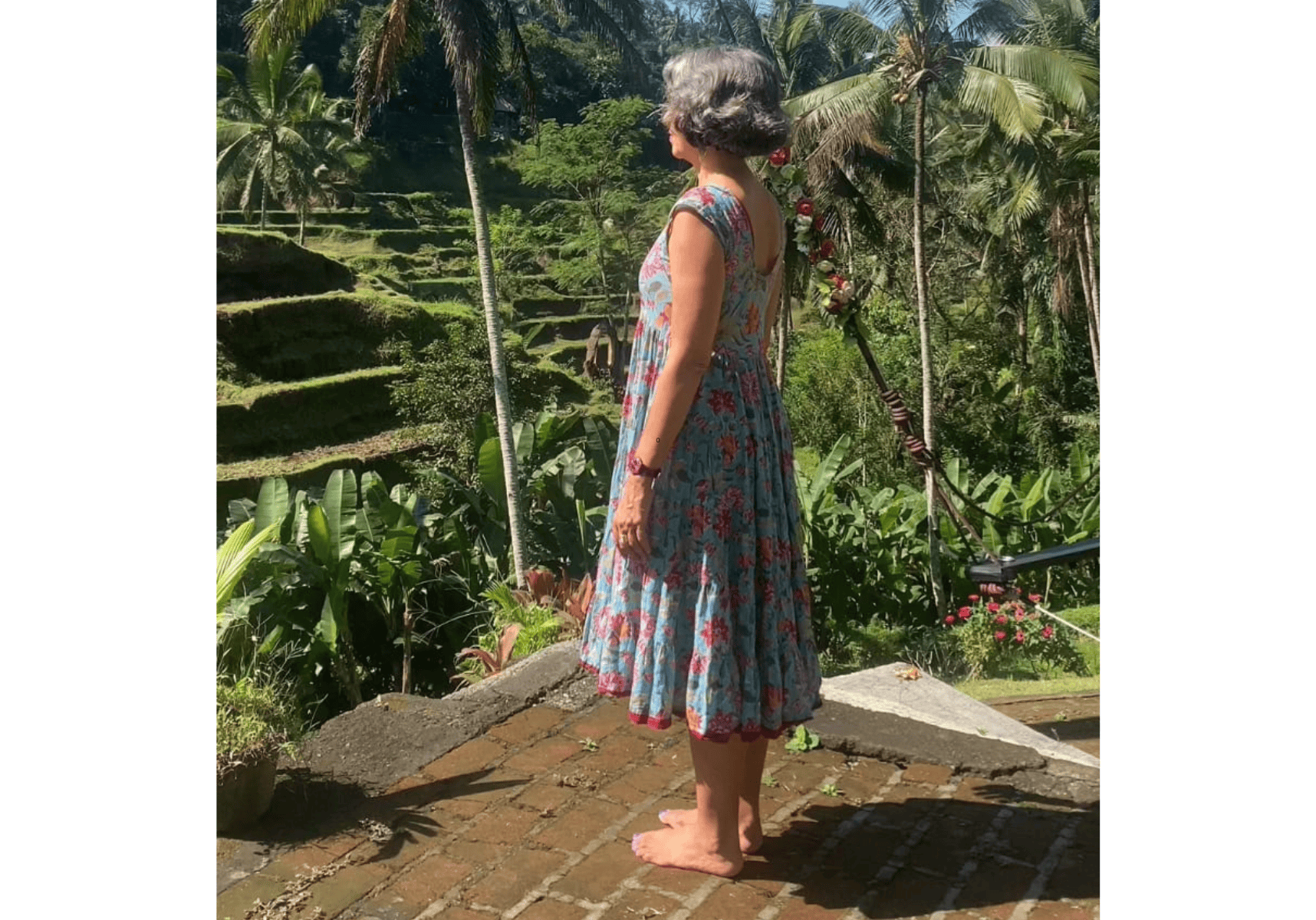
Tadasana
The First to Learn and the Last to Master - By Barbara Courtille
Reading time: 3 minutes
Many years ago, one of my teachers shared a piece of wisdom that has profoundly influenced my approach to teaching yoga: she said that the true measure of an advanced practitioner is not in their ability to perform complex asanas but in how they stand in Tadasana. This insight has stayed with me, and as a teacher, I closely observe my students in Tadasana. Not to judge, but to understand their current state of practice and to tailor my classes to their needs.
The Foundations of Tadasana
At its essence, Tadasana is about establishing a strong, grounded, and aligned posture. Here are the key points of alignment:
- Feet: Place them hip-width apart, grounding evenly through all four corners.
- Legs: Engage the muscles, lifting the kneecaps and firming the thighs.
- Pelvis: Keep it neutral with a slight tuck of the tailbone.
- Spine: Lengthen upwards, creating space between each vertebra.
- Chest: Open and lift without flaring the ribs.
- Shoulders: Relax them down away from the ears, arms by the sides, palms facing forward.
- Head: Balance it over the spine, gazing forward with a soft focus.
The First to Learn
Tadasana’s simplicity makes it accessible to beginners, providing a clear introduction to the principles of alignment and balance. It teaches students to stand mindfully, cultivating body awareness from the very start. This pose sets the foundation for more complex asanas, embedding the importance of grounding and alignment.
The Last to Master
While Tadasana appears straightforward, its mastery involves understanding subtle body dynamics and maintaining continuous awareness. The pose demands a delicate balance between effort and ease, grounding and lifting, and external alignment with internal awareness. Each practice can reveal new layers of depth, from the distribution of weight in the feet to the engagement of the core and the elongation of the spine. The breath plays a crucial role, guiding the flow of energy and maintaining focus.
Teaching Tadasana: Tips for Yoga Teachers
- Patience and Detail: Approach teaching Tadasana with patience, emphasizing the importance of small adjustments and mindful engagement.
- Alignment Cues: Use clear and precise cues to guide students into proper alignment. Encourage them to feel the connection between different parts of their body.
- Props and Modifications: Introduce props like blocks or the wall to help students find stability and alignment.
- Integration: Show how Tadasana principles apply to other poses, creating a seamless flow from one asana to another.
Tadasana as a Metaphor
Tadasana symbolizes the essence of the yoga journey—grounded yet striving for growth, simple yet profound. Mastering this pose mirrors the path of self-discovery and personal growth that yoga offers. It teaches patience, perseverance, and the beauty of continuous learning, even in what appears to be the simplest of practices.
Practical Exercises and Adjustments
- Foot Awareness: Practice lifting and spreading the toes, then grounding them back down to create a stable base.
- Pelvic Alignment: Place hands on the hips and gently tilt the pelvis forward and back, finding the neutral position.
- Shoulder Release: Inhale, lift the shoulders towards the ears, exhale, and roll them back and down, releasing tension.
Tadasana is much more than just standing on a mat. It is a practice of mindfulness, alignment, and connection. As yoga teachers, continually exploring and deepening our understanding of this foundational pose can enhance our teaching and inspire our students. Encourage your students to embrace Tadasana as a lifelong practice, always returning to its simplicity and depth.







